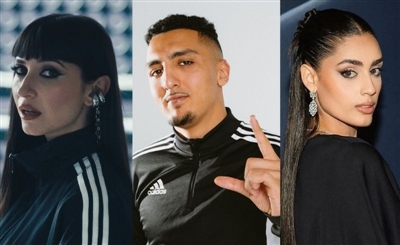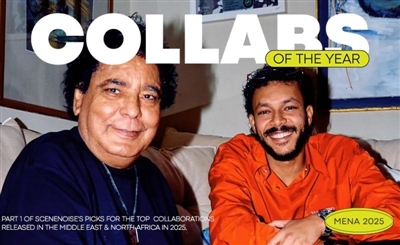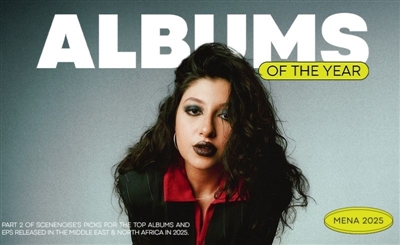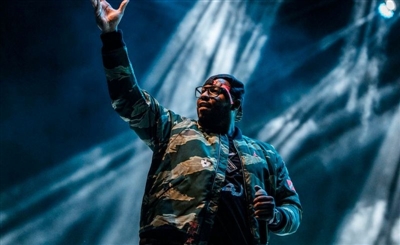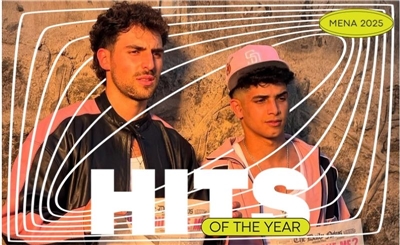Sudanese Artists Alsarah, Flippter & Sufyvn Team Up In 'Farasha'
Alsarah, of Alsarah and The Nubatones, ventures into a new sonic territory where folk meets futurism, in her latest track and concept video, ‘Farasha’.
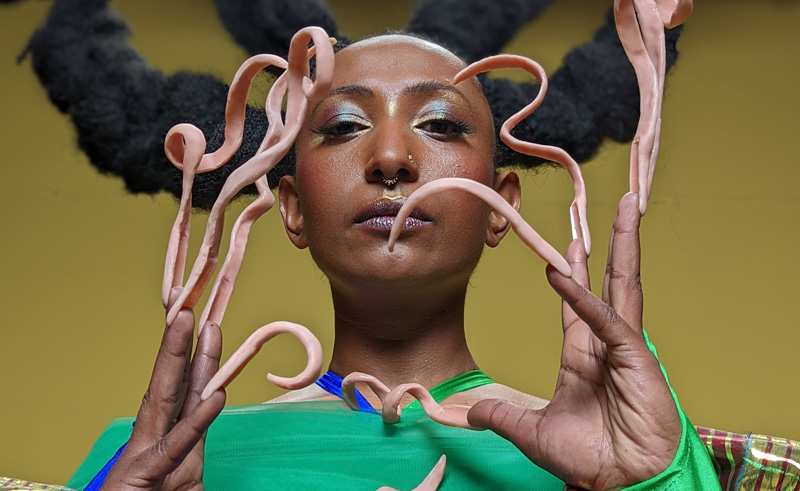
Photo credit: Remon Elmarkiz
In her new track ‘Farasha’ (meaning ‘Butterfly’ in Arabic) Alsarah pays homage to the feminine in all of us, and what she calls “The spirit of resistance, resiliency, and perseverance.” Using field recordings Alsarah gathered in the Nuba Mountains and the Blue Nile in Sudan during the filming of the groundbreaking documentary ‘Beats of the Antonov’.
‘Farasha’ was released in support of a new project aimed at building music incubation hubs around Sudan, in partnership with Sudan Civic Lab. Under Alsarah’s direction, ‘Farasha’ has brought together what she calls “remarkable talent from the Sudanese diaspora,” as it was co-produced with Sufyvn and features guest rapper, Flippter.
‘Farasha’ marks a shift in sonic direction when compared to Alsarah’s previous work, particular her albums with the Nubatones, ‘Silt’ and ‘Manara’ (Wonderwheel Recordings, 2014 and 2016), in addition to ‘Aljawal’ (Soundways Recordings, 2013) produced by Débruit. Known largely for pioneering a new sound style that combines folk music and what she calls “East-African-Retro-Pop,” Alsarah’s sound becomes more abstracted in ‘Farasha’.
This abstraction becomes amplified in the music video made for the track, directed by award-winning Sudanese multidisciplinary artist, Mai Elgizouli, who deploys her visual mastery to “shine a light on neglected issues facing women in Sudan, which have ranged from societal pressure over beauty standards to women’s roles in the revolution,” as written in the liner notes.
“Having worked with Mai in the past on Men Ana, I was certain she was the perfect choice for this project. She’s a creative multi-disciplinary genius who is capable of drawing from the Sudanese past into its future,” says Alsarah.
Farasha’s music video is utterly captivating. Produced by Sudanese artist, Ahmed Abuzaid, the video was shot in Egypt in 2022 with a cast of 11 Sudanese women and contributions from what Alsarah calls, “some of the most innovative visionaries and creatives in the film and fashion industries.”
Opening up with a groovy yet distorted bass guitar and layered vocal chants, Alsarah enters against a more minimal sonic backdrop compared to her work with the Nubatones, which is often driven by a bigger band sound. Instead, in ‘Farasha’, Alsarah’s vocals are front and centre - the instrumental’s looping quality brings a hypnotic and transcendental element, which becomes reinforced by Alsarah’s transformation in each scene.
Perhaps the main element that connects ‘Farasha’ with Alsarah’s previous work, is her ability to lay down a groove, which her vocals ride seamlessly upon throughout the track. Textured with a lo-fi sensibility set against stunning synth pads, a 4/4 rhythm, and Sufyvn’s treatment of the field recordings combine to give the track a unique soundscape. At about the halfway mark of the track, Flippter comes in with his lyrical prowess, marketing the clearest shift in Alsarah’s direction, which for the most part, has been driven by metaphorical songwriting and contemporary Arabic poetics.
‘Farasha’ features artistic contributions from Ahmed Umar for a set design full of intricate references, Ahmed Sorour for costuming and styling that pulled from diverse Sudanese traditions and propelled them to the future, Mawada El Tohamey’s hair art and sculpture that filled the video with mystic symbolism. This combination of artistic elements allows Alsarah to transform visually with hair and nails growing like rhizomes breaking out of the underground, and through the surface. Within this new landscape that she is cultivating with some of the region’s most creative artists - from stylists to producers - is yet another example of Alsarah’s flourishing artistic vision, and her knack for unearthing multidisciplinary collaborations.
To watch Alsarah's 'Farasha' see here:
- Previous Article test list 1 noise 2024-03-13
- Next Article Adriatique & Cercle Host Electronic Music Event at Hatshepsut Temple
Trending This Month
-
Dec 24, 2025
-
Dec 23, 2025



